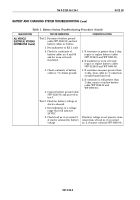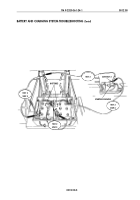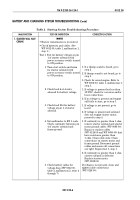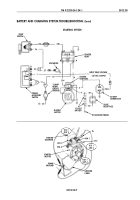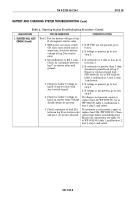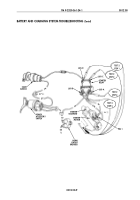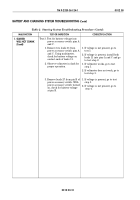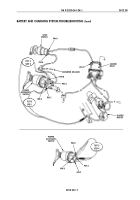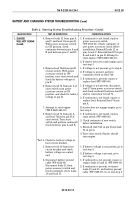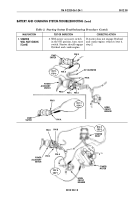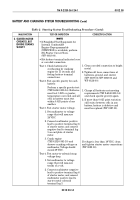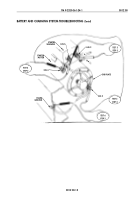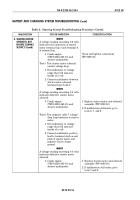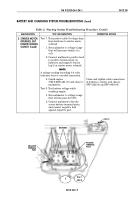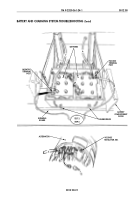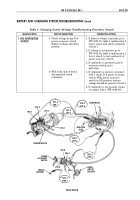TM-9-2320-361-24-1 - Page 198 of 1176
MALFUNCTION
TEST OR INSPECTION
CORRECTIVE ACTION
2. STARTER MOTOR
OPERATES, BUT
ENGINE CRANKS
SLOWLY
NOTE
• If Simplified Test Equipment for
Internal Combustible
Engine–Reprogrammable
(STE/ICE-R) is available, perform
NG Starter Circuit Tests.
(WP 0018 00).
• Hot battery terminal indicates loose
or corroded connection.
Test 1. Check batteries for
overheating by cranking
engine for 15 seconds and
feeling battery terminal
connections.
Test 2. Test specific gravity for each
battery.
Perform a specific gravity test
(TM 9-6140-200-14). Batteries
must test 1.225 or greater,
temperature corrected, and all
cells in battery must test
within 0.025 points of one
another.
Test 3. Test starter motor voltage.
1. Set multimeter to voltage
range that will measure
24 VDC.
2. Connect multimeter positive
lead to positive terminal lug 6
of starter motor, and connect
negative lead to terminal lug
5 on end plate of starter
motor.
3. Crank engine
(TM 9-2320-361-10) and
observe cranking voltage on
multimeter. Voltage should
exceed 19 VDC.
Test 4. Test motor-to-solenoid strap
voltage drop.
1. Set multimeter to voltage
range that will measure
tenths of a volt.
2. Connect multimeter negative
lead to positive terminal lug 6
of starter motor, and connect
multimeter positive lead to
starter motor solenoid
terminal lug 3.
1. Clean corroded connection to bright
metal.
2. Tighten all loose connections at
batteries, ground, and starter
(WP 0087 00, WP 0088 00 and
WP 0126 00).
1. Charge all batteries not meeting
requirements (TM 9-6140-200-14)
and check specific gravity again.
2. If more than 0.025 point variation
still exists between cells in any
battery, battery is defective and
must be replaced (WP 0127 00).
If voltage is less than 19 VDC, clean
and tighten starter motor connections
(WP 0088 00).
TM 9-2320-361-24-1
0012 00
0012 00-14
BATTERY AND CHARGING SYSTEM TROUBLESHOOTING (Contd)
Table 2. Starting System Troubleshooting Procedure (Contd).
Back to Top

